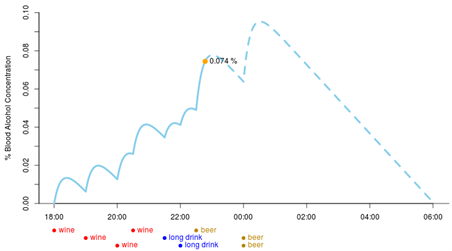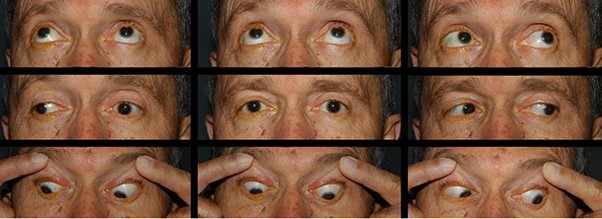How would you feel if you were pulled over for drunk driving and the officer asked how much alcohol you had consumed? You might be able to lie about how many drinks you’ve had, but there is one problem; they can make sure that it’s not true with a Breathalyzer test. Many people who are arrested for DUI think that they can easily pass any Breathalyzer test by chewing gum or drinking lots of water before the test. This article will show how these methods don’t work, and what steps you should take to ensure success on your next Breathalyzer test!
How Do Breathalyzers Work?
Breathalyzers work by determining how much alcohol is in the blood. Once you breathe into the device, it calculates how long it takes for each breath to get from your lungs to reach your mouth and how long it takes for you to exhale after breathing in. This data informs how fast or slow your body eliminates alcohol. The device then calculates how many grams of alcohol you have in your blood.
Breathalyzers may not be 100 percent accurate all the time, because they can’t always pick up on certain types of drugs or medications that a person has taken. In some cases, having diabetes or eating disorders could cause Breathalyzer readings to show as impaired even when the person is not drunk.
Blood Alcohol Concentration and Your Breath
The blood alcohol concentration is how much alcohol is in your blood. This number will change how quickly alcohol is eliminated from your blood and how long it takes for you to sober up. A person with a lower BAC can still be impaired and should not drive, but they will recover more quickly than someone who has a higher BAC.
The unit of measurement for the BAC is grams per 100 milliliters of blood (g/100mL). Different countries have different legal limits for how much alcohol it’s safe to drink while driving. The United States, for example, has a limit of 0.08 g/100mL. Keep in mind how much you’re drinking and how fast your body is eliminating the alcohol.
Alcohol Elimination Rate

The faster a person’s BAC decreases, the sooner they’ll be sober enough to drive again. Also known as an elimination rate, this measurement tells how many grams of alcohol are removed from 100 mL blood per hour (g/100mL/hour). The average person can eliminate about 0.015 g/100 mL/hour, but how quickly alcohol is eliminated depends on the number of drinks consumed. If you have a drink an hour then your BAC will go down by 15 percent each hour until it reaches zero grams per 100 milliliters (g/100mL).
Breathalyzer Myths
Breathalyzer myths are everywhere. They exist because of how the justice system came to treating alcohol and drug use with penalizing consequences for failing a Breathalyzer test. Here I’ll debunk some of these myths:
Holding Your Breath
The first myth that I’ll address is how holding your breath can affect how clean your Breathalyzer test will be. This is false because it’s how long you’re blowing into the Breathalyzer machine, not how long you hold it in. The longer you hold your breath, the less air there is for alcohol to dissipate which will increase the amount of alcohol detected by the Breathalyzer.
Burping Or Vomiting
The next myth that I’ll address is how burping or vomiting can affect how clean your Breathalyzer test will be. This is also false because the amount of air for alcohol to dissipate depends on how long you’re blowing into the machine, not how long it takes for burps or vomit to come up. If you burp or vomit before blowing into the machine, there’s a lot of air space in your stomach and windpipe which means there’s more chance for any alcohol to be eliminated from your body.
Gum or Mints
Gum or mint water can increase saliva production while also diluting any alcohol molecules present in the mouth. But since these substances only last a short while, they cannot be used as reliable ways of fooling a Breathalyzer test. You should eat something that contains gluten instead – even just eating crackers will work! If gluten does not help, ask for medical attention because you might have a medical condition that prevents you from absorbing gluten.
Sucking On Pennies
The last myth I’ll address is how sucking on Pennies can affect how clean your Breathalyzer test will be. This one’s true – pennies are made of copper which is a metal that reacts with the acetone in your breath and produces a chemical called copper acetate. Copper acetate is not alcohol, so it won’t react to the chemicals in the Breathalyzer machine, meaning it will have no effect on how clean your Breathalyzer test will be.
Field Sobriety Tests
One of the tests that law enforcement officers use to determine how impaired a person is called field sobriety tests. These tests are designed to detect how impaired a person is on their ability to balance, walk in a straight line, etc. They’re commonly used to determine how drunk someone might be.
Horizontal Gaze Nystagmus

There are 16 other field sobriety tests that officers can use to determine how impaired someone might be. One of these is called horizontal gaze nystagmus, or HGN. The officer looks at how a person’s eyes react when the officer moves their hands back and forth in front of their face. The officer checks how smoothly the person can follow their movement with their eyes. If there are jerky movements, it may indicate how drunk they are.
The Walk-and-Turn
Another test that officers often use is called walk-and-turn. The individual has to follow instructions by taking nine heel-to-toe steps along a straight line, turning, and taking nine more steps back in the opposite direction. If they don’t perform this task correctly, it may indicate how drunk they are.
The One-Leg Stand Test
Another test that officers use is called the one-leg stand test. The officer tells the individual to keep their leg raised in front of them while counting out loud until told to put their foot down. If someone can’t do this for 30 seconds or longer, it may indicate how drunk they are.
The Finger-to-Nose Test
Another test that officers use is called the finger-to-nose test. The officer tells the individual to touch their nose with each hand, alternating back and forth between hands while counting out loud until told to stop. This helps determine how well a person’s eyes and hands work together, which may indicate how drunk they are.
These tests can be altered slightly to try to determine how impaired someone is on their ability to walk straight or keep their balance. Officers typically use these field sobriety tests in combination with a Breathalyzer test or blood alcohol concentration (BAC) level when determining whether or not someone is impaired.
How to Actually Pass a Breathalyzer Test
- Make sure that you don’t drink at all before your test.
- Don’t eat anything that might make you burp, like soda or gum with sugar in it.
- If you can drink dairy products, they will help coat the inside of your throat and reduce how much carbon dioxide reaches the sensors on your tongue. – how to pass a Breathalyzer test
- Keep your mouth moist, but avoid anything that might be too acidic or cause you to salivate.
- Don’t try any home remedies like vinegar because they don’t work and may even make things worse.
- Don’t exercise before your test.
Keeping calm and relaxed during the test can also help people to do better, while things like clenching fists or jaw muscles may cause them to do worse. If someone does poorly on these tests, they should make sure not to argue with officers about how drunk they are because this may make them look even drunker.
Things That May Worsen Your Breathalyzer Test Results
There are many things that may worsen how well people do on the field sobriety tests, so it’s important for them to not eat anything four hours before the test, especially if they’ve eaten anything that contains garlic.
It’s also important not to smoke anything within two hours of taking the test because this also increases how badly people will do. Drinking any alcohol right before taking the test will also cause people to do worse on it because this will increase how much alcohol is in their system.
Conclusion
By now, you should know how to pass any Breathalyzer test and how the police may determine if someone has been drinking too much alcohol. Follow these tips throughout your life so that you can avoid getting behind the wheel after drinking or risk facing consequences for doing so.
